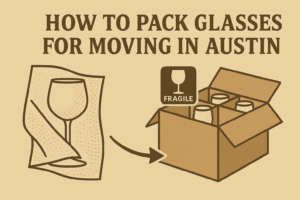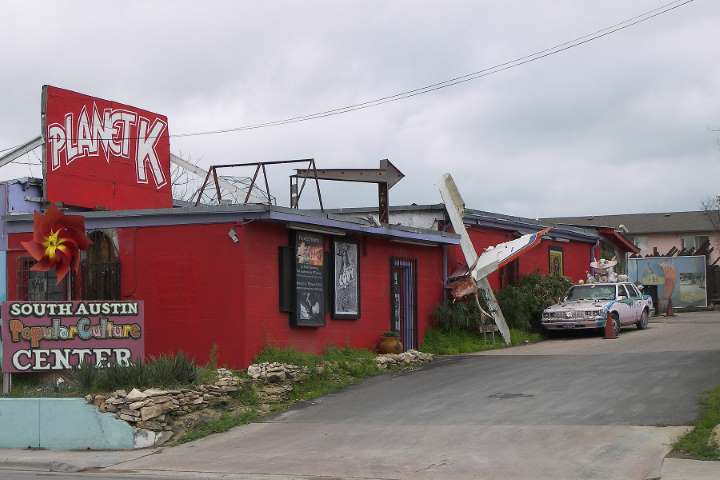The time has finally come. You’re ready to move out of your parent’s house and take your first steps into your new life. Whether you’re going to college or have landed your first job, moving can be an overwhelming yet exciting experience. Fortunately, you’ve come across our guide on what you need to know Here’s our list of moving-out tips:
Setting the stage for first-time movers
A well-planned move sets the tone for your new beginning. Especially when you are moving for the first time, Starting off on the right foot in your new space fosters a positive outlook and eases the adjustment period in your new home.. By planning ahead, you can save time and money.
Importance of being prepared
Preparing for your move will help alleviate stress and uncertainty. Having a clear plan in place ensures that you’re organized and ready for every step of the process. Being prepared minimizes the risk of last-minute issues and delays. It allows you to address potential challenges beforehand, ensuring a smoother transition.
Preparing for the Move
Establishing a realistic budget
Creating a realistic first-time moving budget is crucial for a smooth transition. Include essentials like packing, transportation, and potential storage fees. Account for packing supplies, transportation costs, and potential storage fees. Research professional movers by obtaining quotes. Allocate funds for unexpected expenses that may arise. By creating a budget, you can navigate the moving process knowing that you’re financially prepared for this big life change
Creating a timeline for your move
Moving for the first time requires careful planning, and creating a timeline is an important part of the planning process:
Start Early: Begin planning as soon as you know your moving date. The earlier you start, the more organized and less stressed you’ll be as moving day approaches.
Break Down Tasks: Divide the moving process into smaller tasks, such as packing, finding a moving company, notifying utilities, and updating your address.
Set Milestones: Assign specific dates or time frames to each task to help you track progress and ensure you stay on schedule.
Create a Moving Calendar: Use a digital or physical calendar to mark important dates, deadlines, and appointments related to your move.
Prioritize Packing: Plan to start packing well in advance. Begin with items you use less frequently and save essential items for last-minute packing.
Notify Service Providers: Inform utility companies, post offices, banks, and relevant institutions about your change of address. Schedule service disconnections and reconnections as needed.
Book Moving Services: If you’re hiring professional movers or renting a truck, book their services well in advance to secure your preferred moving date. Dates can fill up quickly during busier times of the year.
Declutter: Go through your belongings and decide what to keep, sell, donate, or discard. This reduces the items you need to pack and move and saves money.
Label Boxes: As you pack, label boxes with their contents and the room they belong to. This makes unpacking easier in your new home.
Confirm Plans: A week before your move, confirm all arrangements with your moving company and ensure all necessary preparations are in place.
Pack Essentials: Pack a separate box with essentials you’ll need immediately upon arrival at your new home.
Final Check: On moving day, do a final walkthrough of your old home to ensure everything is packed and nothing is left behind.
Decluttering and organizing your belongings
Decluttering and organizing your belongings can simplify your moving process while saving you money. Start fresh in your new home with a sense of order and clarity. Here are some tips to help:
Begin Decluttering Early: Start the decluttering process well ahead of your moving date to avoid last-minute stress. It can take time to make decisions and to sell or donate items you don’t want.
Sort Room by Room: Take one room at a time to avoid feeling overwhelmed. Sort through items in that room before moving on to the next.
Use the Three-Pile System: Create three piles for items: keep, donate/sell, and discard. Be honest about what you truly need and use.
Be Ruthless: Don’t hold onto items out of sentimentality. If you haven’t used or needed something in a while, it might be time to let it go.
Consider Space: Think about the space in your new home. If an item doesn’t have a purpose or a place in your new space, it might be best to part with it.
Sell or Donate: Items that are in good condition but no longer serve you can be sold or donated. This can also help you offset moving costs.
Minimize Duplicates: If you have multiples of the same item, consider keeping only the one you use.
Digitalize: Scan and store important documents digitally to reduce paper clutter.
Ask for Help: Enlist friends or family to help you make decisions about what to keep and what to let go.
Set Time Limits: Give yourself a certain amount of time to make decisions about each item. Don’t overthink it.
Stay Objective: Keep your end goal in mind – a clutter-free and organized new home that’s easier to settle into.
Creating an Inventory List
Creating an inventory list is a practical and beneficial step to ensure a smooth and well-organized moving experience. It empowers you with a structured approach and peace of mind throughout the process.
Follow these steps to manage your items:
- Start Early: Begin making your inventory list well in advance. This will give you enough time to be thorough.
- Use Technology: Consider using a digital tool or app to create your inventory. This makes it easier to update and access.
- Room by Room: Go through each room and list down all the items. Be specific – include furniture, electronics, clothing, kitchenware, etc.
- Description: Provide a brief description of each item, including its condition.
- Take Photos: Take pictures of valuable or delicate items. This can be helpful for insurance purposes.
- Assign Numbers: Assign unique numbers to each item. This will make it easier to cross-reference with your moving boxes.
- Keep a Copy: Maintain a physical or digital copy of your inventory list. Share it with your moving company if necessary.
Categorizing Your Belongings
- Group Similar Items: As you list your items, group similar things together. For instance, keep all kitchen items in one category.
- Label Categories: Assign clear labels to each category. This will help you stay organized and simplify the unpacking process.
- Prioritize: Categorize items based on their importance and frequency of use.
- Purge While Categorizing: As you categorize, assess whether certain items are worth moving. This is a great time to declutter.
- Color Coding: Consider color-coding your categories. Use colored stickers or markers on boxes for easy identification.
- Keep Essentials Separate: Create a separate category for essentials you’ll need immediately upon arrival at your new home.
Listing and documenting your valuables
When moving for the first time, documenting your valuables involves grouping similar items together based on their type and significance. This simplifies packing and ensures careful handling.
Packing Tips
Efficient packing involves using sturdy boxes and padding to protect your belongings, making sure to distribute weight evenly, and seal boxes securely.
Choosing the Right Packing Materials: Choose strong boxes, bubble wrap, packing paper, and quality tape to safeguard your items during the move.
Properly Packing Fragile Items: Wrap delicate objects individually, cushion them with packing material, and clearly mark boxes as “fragile” to prevent damage.
Labeling Boxes for Easy Unpacking: Label each box with its contents and the room it belongs to, which will help when you unpack and give you quick access to essential items.
Moving Large and Bulky Items
Transporting sizable items like furniture and appliances requires careful planning, often involving disassembly, padding, and using specialized equipment to ensure a safe move. These items are often heavy so you may want to hire professional movers and prepare for a full-service move. Hiring professional movers who know how to move large, heavy items is a wise decision and well worth the cost.
Dismantling Furniture: Taking apart furniture like tables and bed frames makes them easier to transport. Keep screws and hardware in labeled bags to simplify reassembly.
Securing and Protecting Appliances: Safeguard appliances by securing doors, cords, and components. Use padding and wrap to prevent scratches and damage during transit.
Moving Artwork and Antiques: Valuable artwork and antiques demand careful packing with appropriate materials like bubble wrap, padding, and sturdy boxes to ensure their protection during the move.
Hiring a Professional Moving Company
Entrusting your move to professionals can alleviate stress. They can handle logistics, packing, and transportation efficiently.
Researching and Vetting Movers: Thoroughly research moving companies, read reviews, and check references to ensure their reliability and reputation align with your needs.
Comparing Quotes and Services: Obtain quotes from multiple movers, considering services offered, pricing, and additional fees to make an informed decision. If your move is small, you may want to consider an apartment moving service.
Verifying Licenses and Insurance: Confirm that the chosen moving company is properly licensed and insured to safeguard your belongings during the move.
DIY Moving: Renting a Truck or Trailer
Deciding to do a DIY move instead of hiring professional movers can be an overwhelming task that involves some choices:
Determining the Right Size and Type of Vehicle: It can be difficult to know what size your belongings will fit in. Choose a truck or trailer size that accommodates your belongings while allowing safe and secure transportation. Consider factors like volume and weight.
Understanding the Rental Agreement: Review the rental agreement thoroughly, understanding terms, fees, mileage limits, and return policies to avoid surprises on moving day.
Safety Tips for Driving a Moving Truck: Familiarize yourself with driving a larger vehicle, observe weight limits, secure your load properly, and drive cautiously for a safe and successful DIY move.
Organizing the Move
Efficiently organize your move by planning logistics, coordinating assistance, and preparing for a seamless moving day.
Planning Your Moving Day: Plan the moving day schedule, considering travel time, loading, unloading, and other essential tasks to ensure a smooth transition.
Coordinating Helpers and Movers: Communicate with friends, family, or hired movers to align schedules, roles, and responsibilities for a coordinated effort.
Creating a Day-of-Moving Checklist: Develop a checklist outlining tasks such as packing essentials, checking utilities, and ensuring all items are loaded, helping you stay organized and minimizing stress on moving day.
Handling Moving Day Stress
Overcoming moving day stress involves managing your emotions and expectations, staying organized, and prioritizing self-care. Acknowledge that moving can be emotionally taxing, and set realistic expectations to minimize frustration and anxiety. Maintain a checklist, delegate tasks, and take breaks amidst the chaos of moving. Prioritize self-care by staying hydrated, getting sufficient rest, and ensuring your family’s well-being during the move.
Unpacking and Settling In
Unpacking and settling in includes arranging belongings and adapting to your new environment which will make you feel at home in your new space.
Handling Post-Move Issues: Handling post-move issues involves promptly resolving any concerns that arise after the move.
Addressing any damaged or missing items: Addressing damaged or missing items is crucial for reimbursement or replacement.
Reviewing your moving company: Reviewing your moving company helps assess their performance and informs others about your experience.
Learning from the Experience
Reflect on the moving process and learn from the experience. Recognize successes and areas for improvement to enhance future moves. Use these insights to plan more effectively for your upcoming relocations. Keep this list handy for tips when moving out next time.








